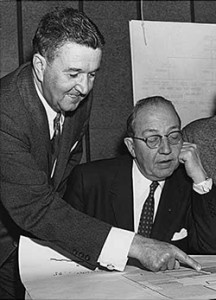How to approach internal projects – Part 1 (of 2): The Pros
By Mike. August 1st, 2010. Posted in Off assignment 1 Comment »

At some point in your consulting career, especially early on, you will not have an assignment to work on (sometimes referred to as “off the clock” or “on the bench”), so the powers that be will suggest (with varying levels of insistence) that you help on an internal project. These often involve developing a methodology, product or computer system to aid with the internal workings of the company.
Management will often tell you how good the project will be for you and the company, what they won’t tell you are the negative aspects of this kind of role.
In this article we examine the positive aspects of such a role. In part 2 we will look at the negative aspects of taking on this kind of role.
Working on internal projects the pros:
- Building your reputation – Completing an internal project on time and to a high standard will undoubtedly get you noticed by the management who will hopefully remember your contribution when choosing people for their next project.
- Networking – You will most likely be working with at least one other person and this gets your name known around the office. The better the work you produce and the more senior the person in charge is, the more chance you have of the work being noticed/recommended and generally appreciated.
- Less pressure – Working on these kinds of projects inevitably have less pressure to them as you are not charging a client for your time. Good news if you are not an expert in the work required.
- Gaining Experience – If you are not already an expert in the work you have been asked to do, this is an ideal time to increase your skill set and/or learn new techniques. Working outside your normal comfort zone is good practice as a consultant and helps you learn how to deal with the different types of work required of you.
- Working in your base office – Although this doesn’t sound like a plus point, being in the office brings its own rewards. For example, being close to the administrators (and talking to them) means you will know about any new projects coming up, and will find out about any changes within the business relatively quickly.
- Internal can become external – Often projects which are created as part of an internal piece of work can be turned around and sold on to clients for significant fees. Being part of the original team will greatly increase your chances of being shipped out to client site.
So there you are, those are what we feel are the pros to internal project work. Look out for ‘Part 2 (of 2): The Cons’ coming soon.
Photo by IMLS DCC






Comments (1)
13th August 2010 at 9:54 am
[…] week, in part one (How to approach internal projects – The Pros), we focused on all the up sides of working on internal […]